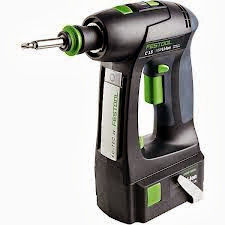No surprise, then, that manufacturers have long pursued the idea of cordless tools with all the ardor of a quest for the Holy Grail. The key lies not so much in designing the tools themselves after all, a circular saw is a circular saw but in designing batteries that can deliver the power needed to operate them.
Power Revolution
The earliest battery packs had about enough power to run a flashlight, and required about 24 hours to fully charge. There's been a revolution in battery power and with it an explosion in the types of cordless tools now available. Not only are the battery packs more powerful, but they can be recharged far more quickly in some cases, in as little as 15 minutes.Mobility
Manufacturers have been steadily reinventing their power tools as cordless models. Already, there are cordless circular saws, reciprocating saws, planers, and even chain saws. While none can yet match the continuous power of traditional power tools, the new cordless tools can get most jobs done efficiently minus the irritating cords.The cordless tools also extend the concept of portability. Because they don't need to be plugged into anything, it's possible to haul these tools far away from a power source whether that means into the woods to build a tree house, or out in the yard to build a shed.
Know Your Battery
In an examination of cordless tools, the subject quickly turns away from the tool to the importance of the type of battery.Nicad cells
Until recently, the battery of choice for portable tools was the so-called nicad cell, named for the combination of nickel and cadmium used at its core.- Benefits: These 1.2-volt batteries can be recharged quickly and have a constant discharge rate. The consistent rate of discharge makes for a steadier use of the tool. In order to power tools, individual nicad batteries are connected together in a series: 10 cells produce 12 volts, and 11 cells produce 14.4 volts. This progression continues with 18, 19.2 and 24 volt tools.
- Downfalls: Good as they are, even rechargeable batteries don't last forever. And after about 1,000 individual charges an inconceivably huge amount for a homeowner, but a level a contractor might eventually hit, they'll have run their course. Unfortunately, nicad batteries contain toxic heavy metals that can't be thrown out in the trash; the batteries must be recycled or disposed of in a hazardous waste landfill.
New NiMH Batteries
Manufacturers are still developing better batteries, and what's happening with them is the same thing that's happening to computer chips: they're getting more powerful and less expensive.Since the nicad recipe appears to have reached its upper limits in terms of power output, tool makers are turning to nickel-metal-hydride batteries, which are called NiMH for short. Because they don't contain cadmium, NiMH batteries are considered more environmentally friendly than nicad batteries.
One common battery rating, known as the amp hr (Ah), measures battery pack capacity. This rating has been steadily rising for nicad batteries over the last five years, but now appears to have hit its limits at 2.0 Ah. By contrast, the NiMH batteries are already at 2.0 Ah, and batteries with ratings of 3.0 Ah will soon be on the market. At the moment, and for the forseeable future, the NiMH batteries cost more than the nicads. Another potential downside to the NiMH batteries, as compared to nicads, is that they offer 25 to 50 percent fewer recharge cycles.
